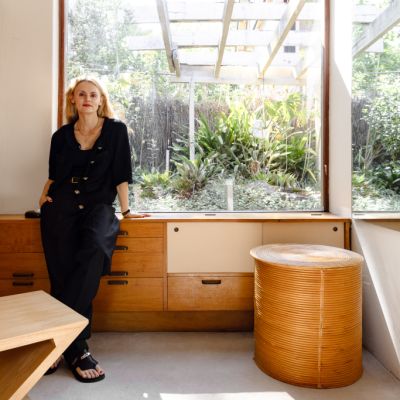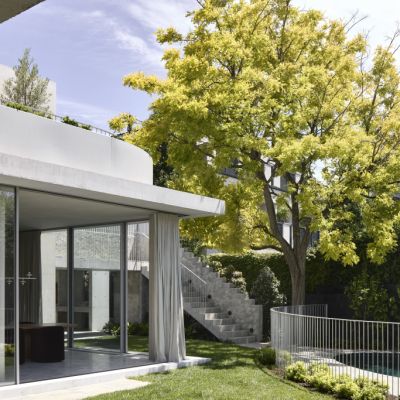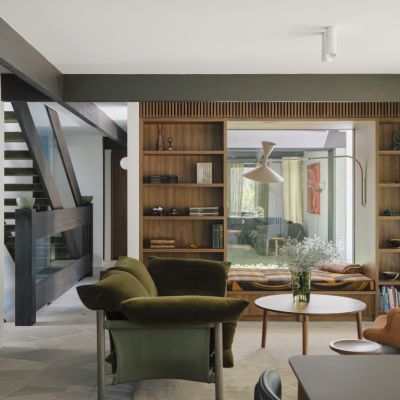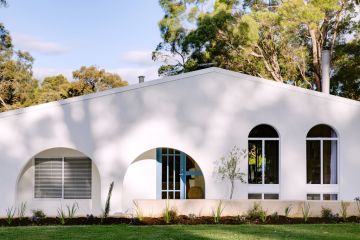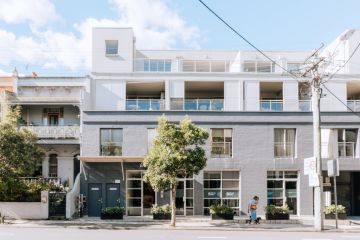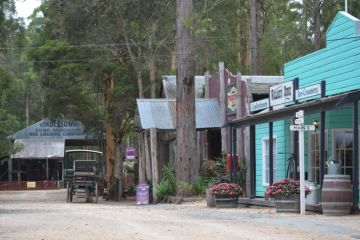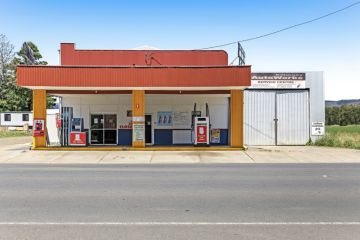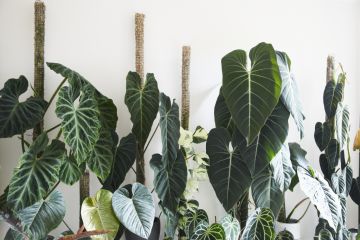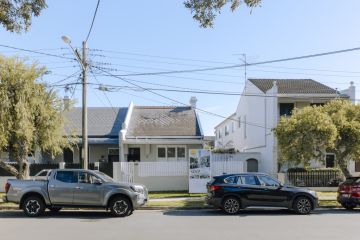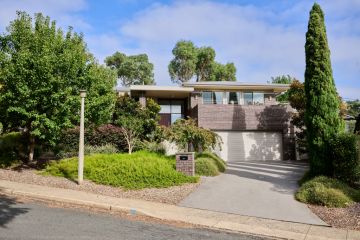Babylon House: An award-winning structure with a rich history
There’s something decidedly cinematic about Babylon – and not just because the house shares its name with a film about the Golden Age of Hollywood.
On the northern tip of Sydney’s Bilgola Plateau, it sits on a ridge between Pittwater and Avalon Beach.
Nestled among giant boulders and eucalypts, fortress-like sandstone walls tower at one end and form an eccentric rotunda with a performance stage at the other.
Up this high, the sunrises and panoramic water views are to die for.
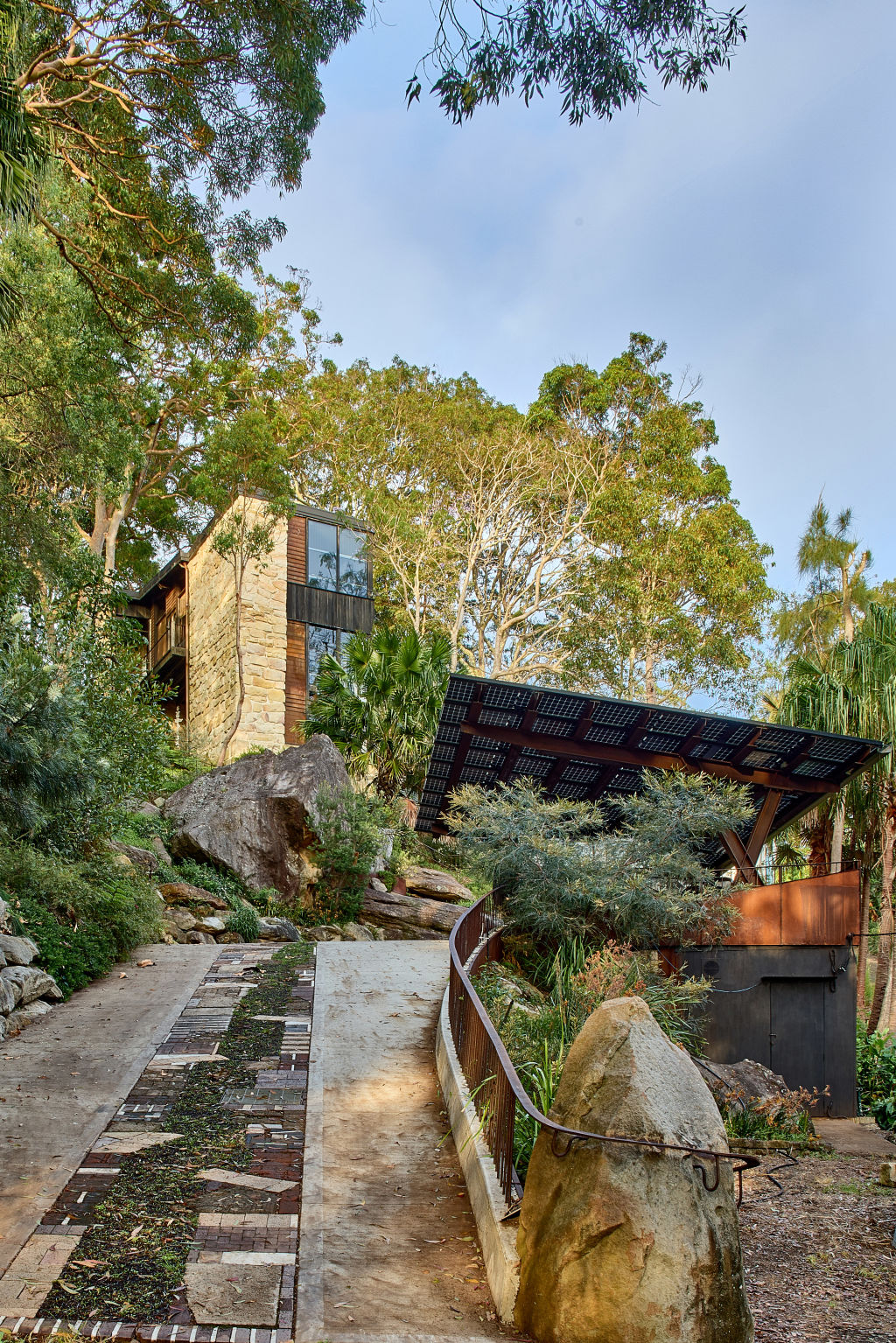
Designed by architect Edwin Kingsberry in the early 1950s – and given a new lease of life by Casey Brown Architecture – the house has an undeniable Gothic majesty, earning it the nickname The Castle.
“The house has a magic difficult to find even in the best architect-designed houses,” says interior designer Fiona Spence, who bought the property with her husband, one-time concert production manager Morris Lyda, in 2015.
Some of that mystique stems from the house’s backstory, which could’ve been lifted from a Hollywood script.
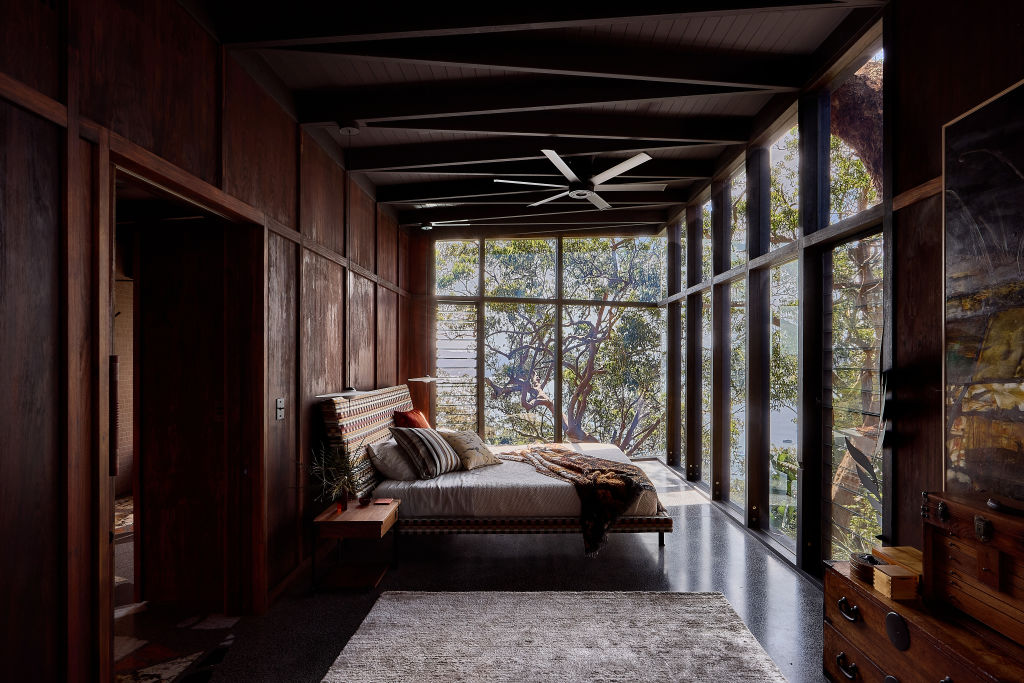
Kingsberry, who owned the land, sold it to a couple on the proviso he built the house he wanted, before taking up (and off) with the wife.
Its reputation grew during the hippie-fuelled ’60s and ’70s as a wild bohemian party house run by the owners’ son, a member of the Bilgola Bop Band.
One of those partygoers was Spence herself, who’d long eyed the property.
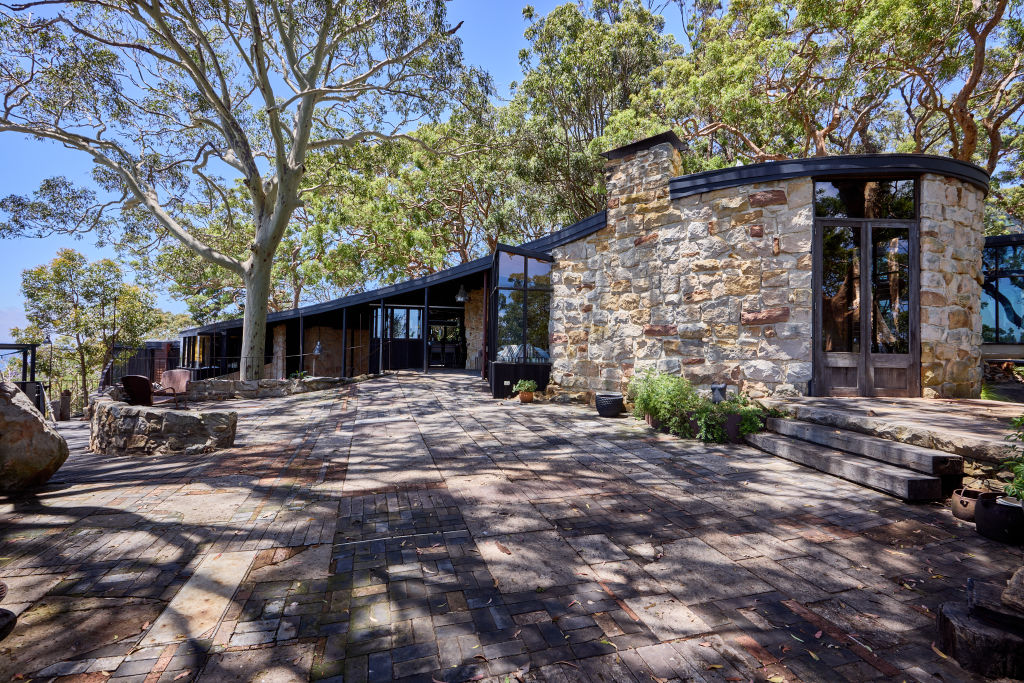
“I was stunned by the journey up the [96] stone stairs from the car park through the arched passageway,” she recalls. “It was like entering a castle.”
When the opportunity arose to buy it, the couple pounced. It had been let go and was in need of love.
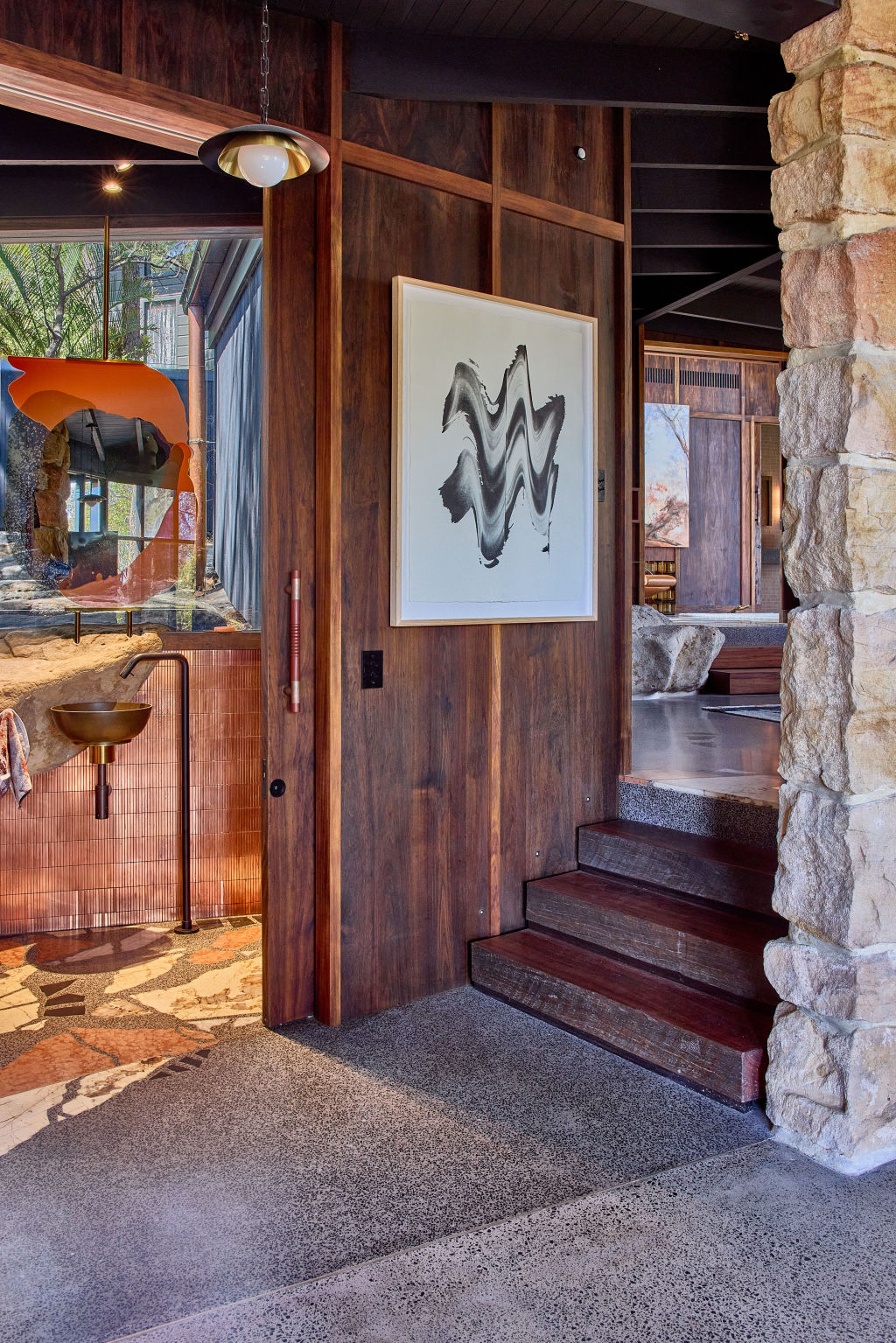
“That was the beauty of getting it … in its raw form,” says Spence, who rechristened the property Babylon, after the Tower of Babel.
“No one had messed with it. We just needed to coax it into the 21st century.”
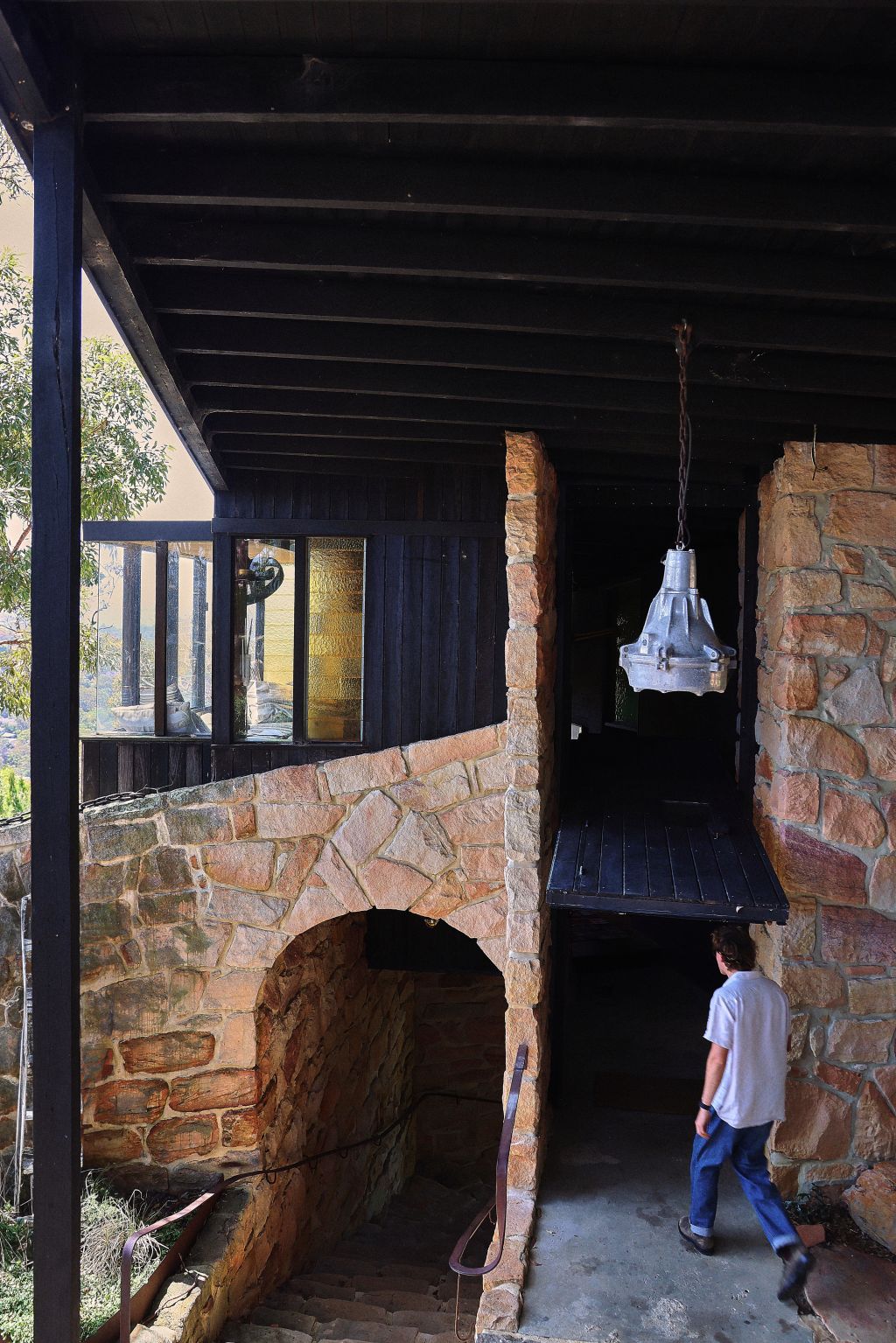
The couple approached Rob Brown of Casey Brown Architecture.
He had to work with a mix of styles – modern and Sydney School (known in architectural circles as nuts and berries), as well as the quirks and idiosyncrasies of the opera-loving Kingsberry, who dubbed the house Götterdämmerung (Twilight of the Gods) after Wagner’s Ring Cycle.
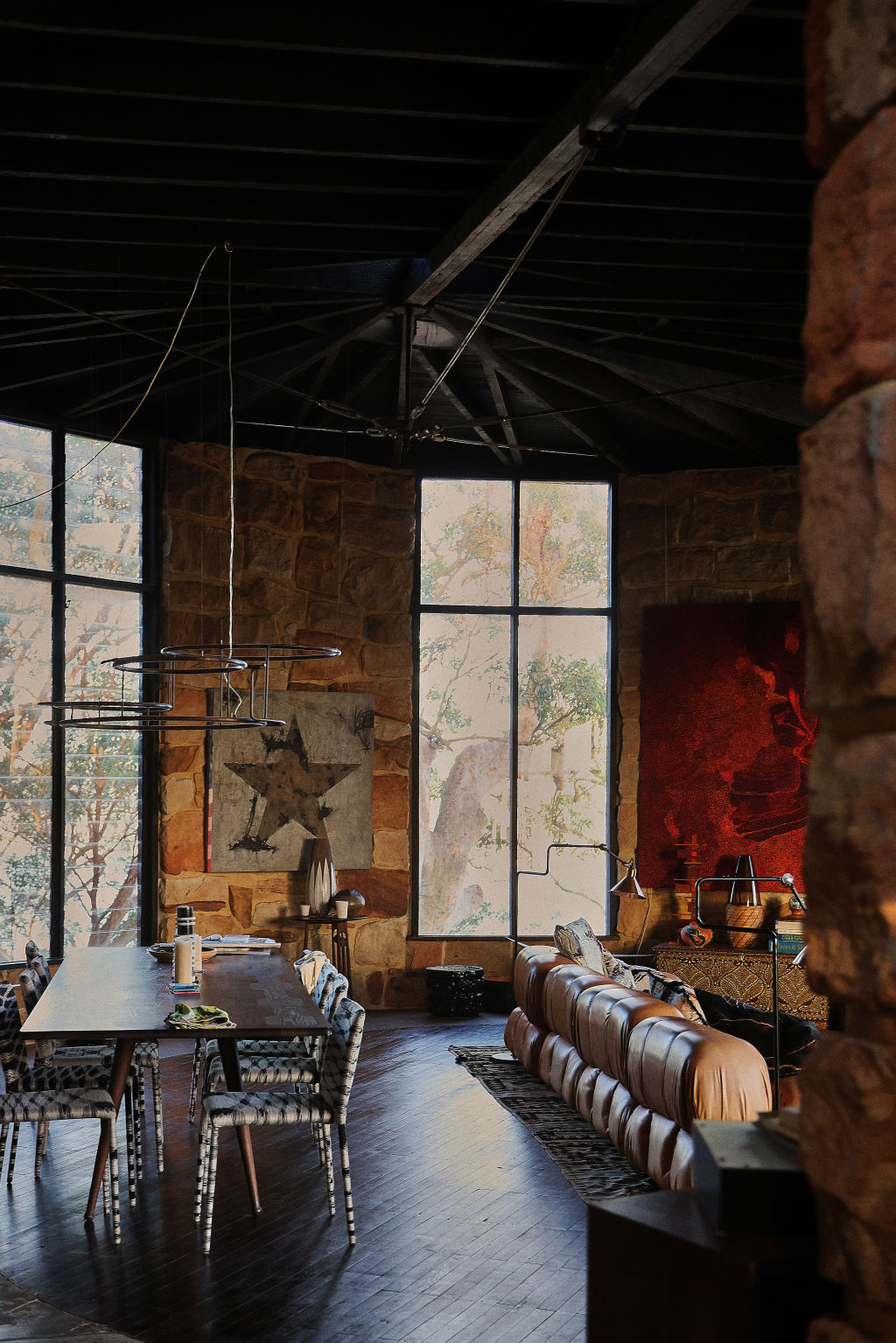
He also collaborated with Spence and Lyda, who were keen to lend the design process their own expertise.
“The owners, drawn to the original character, wanted something in that character, not a copy but in the spirit of the original,” Brown says. “They wanted to marry the aesthetic and design language of old and new.”
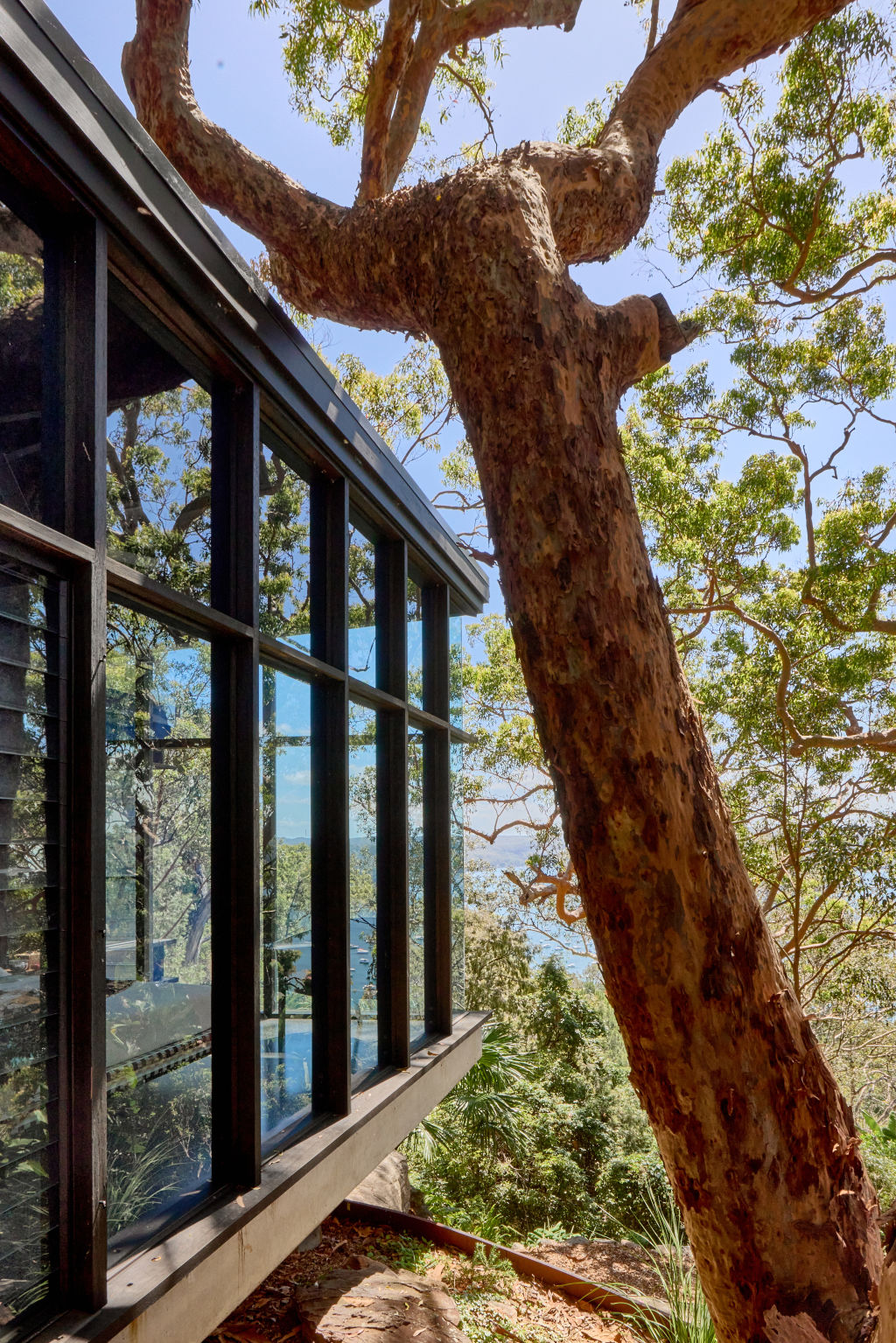
Initially, a cable car was installed for easier access from a new solar-powered carport.
The stairs were restored with handcrafted wrought-iron handrails and recycled timber steps added.
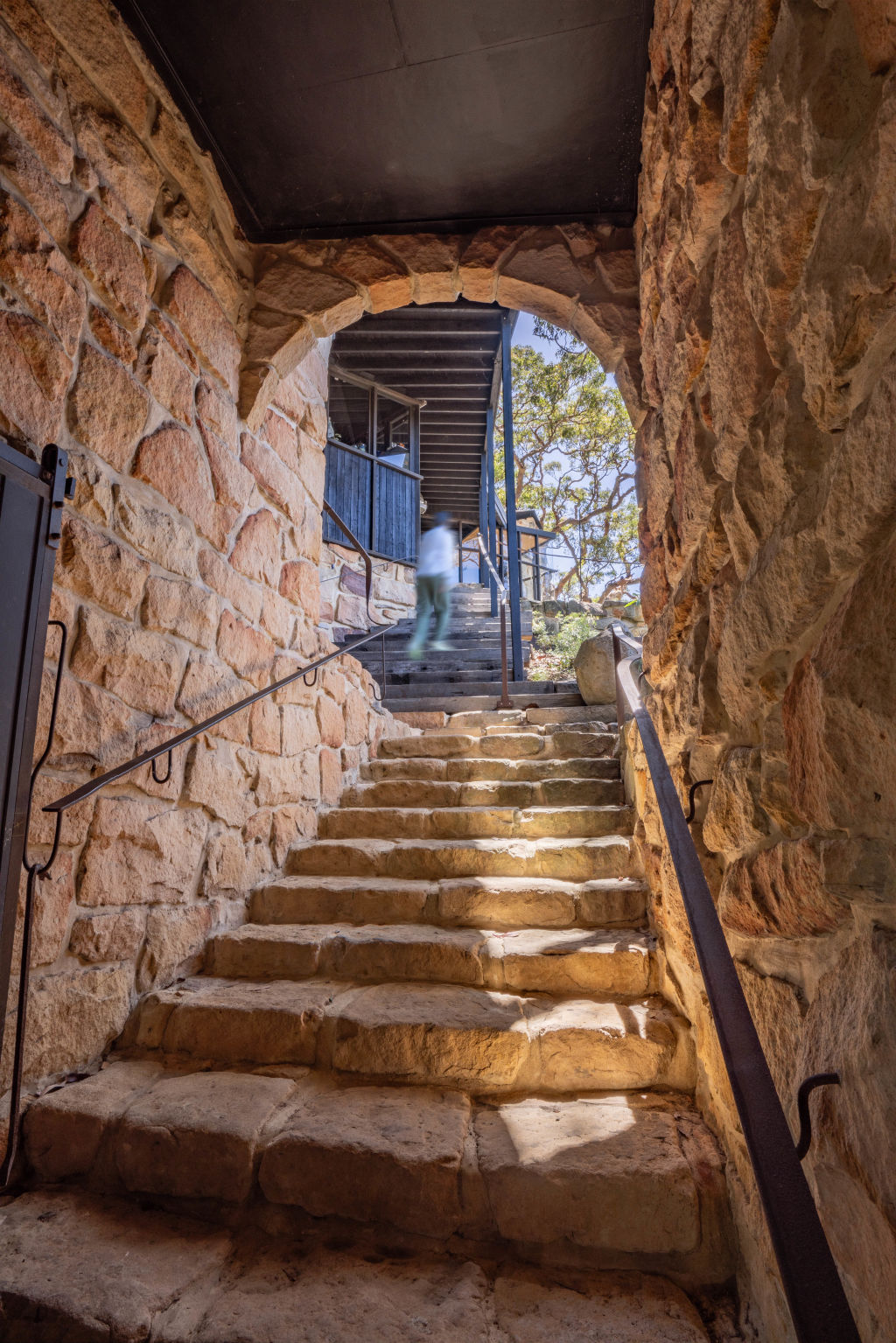
The project’s early stages also focused on revamping the existing three-storey apartment (with a trapdoor to a basement bathroom) and an oval-shaped “grand room”, with an unusual gravity-defying, bowstring truss ceiling.
This included repointing sandstone walls, restoring a fireplace and replacing the roof that spanned both wings and the patio in between.
In keeping with Babylon’s eccentric nature, a dramatic four-metre pivoting wall was added to the east wing as well as a guillotine-style steel shutter between the bar and terrace.
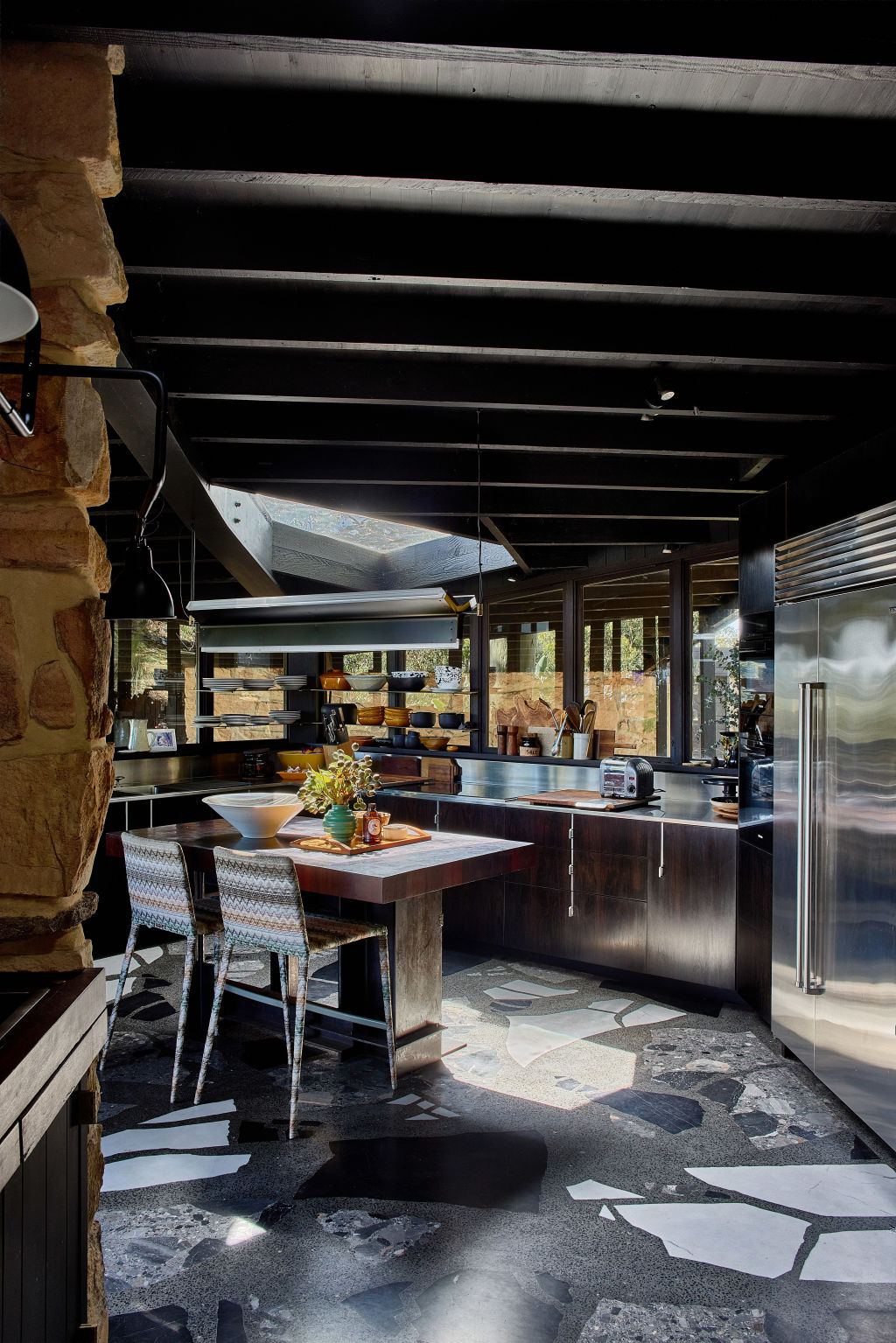
However, it’s the major additions – a new southern wing and a kitchen (five times bigger than the previous one) – that play most to the whimsical, offbeat nature of the original architecture.
Notably, the new wing – bedroom, en suite, robe, study and powder room – was built around the trees and boulders, so “live” rock reaches into the rooms.
“When we removed the soil, we exposed this fantastic rock, which we decided to include,” Brown says of the idiosyncratic design. “It was a chance to enhance and respect the place, to integrate it with nature.”
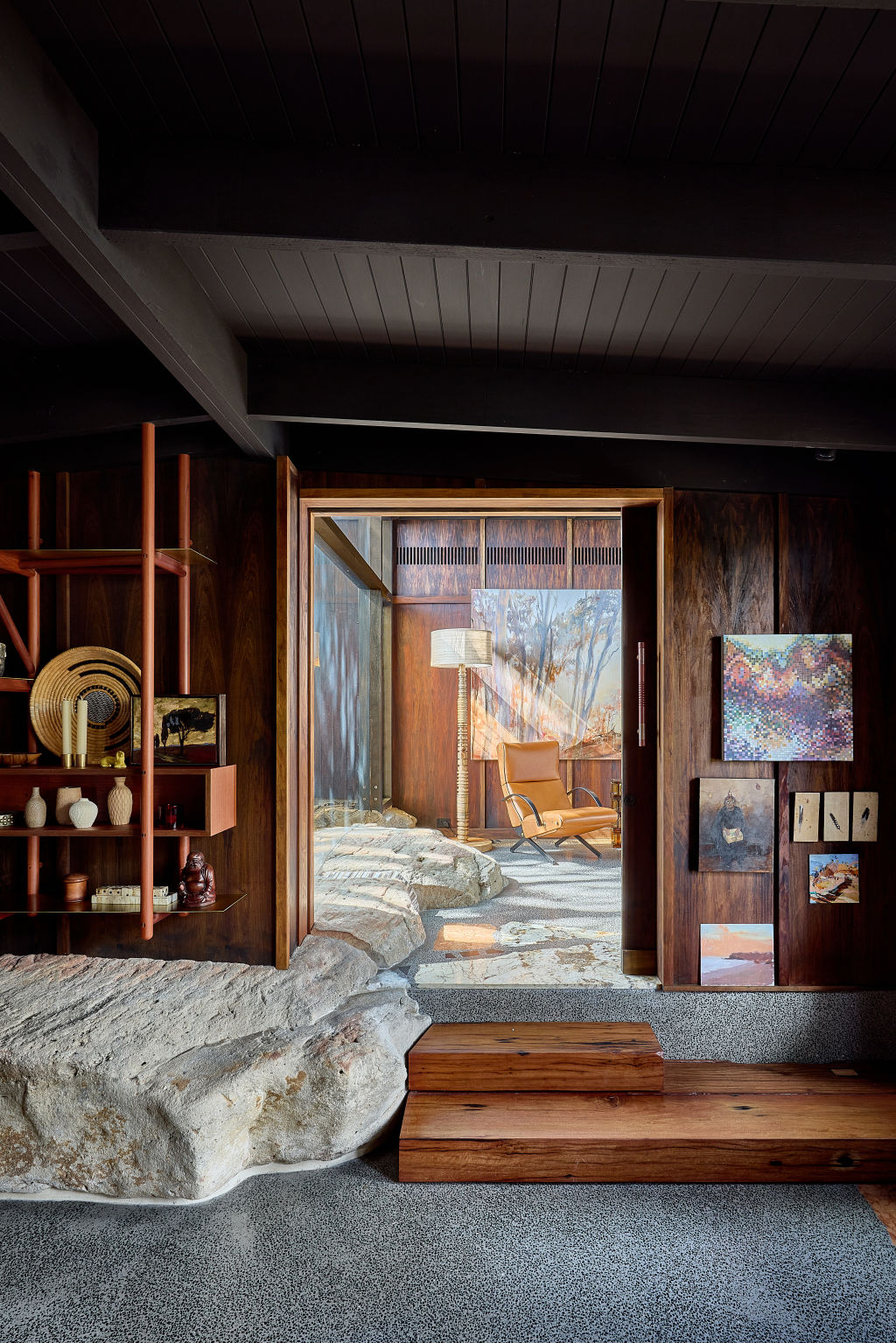
Equally bonkers are the crazy-good terrazzo floors inset with recycled marble and granite chunks in the new wing and kitchen.
This is where Spence stepped up. She drew inspiration from Canberra’s Monster Kitchen and Bar and the house’s original bathroom, arranging stone pieces as if she were creating an abstract artwork, after which the terrazzo was poured.
Spence worked with a fiery Patagonian quartz, as well as black, white and red-coloured stone.
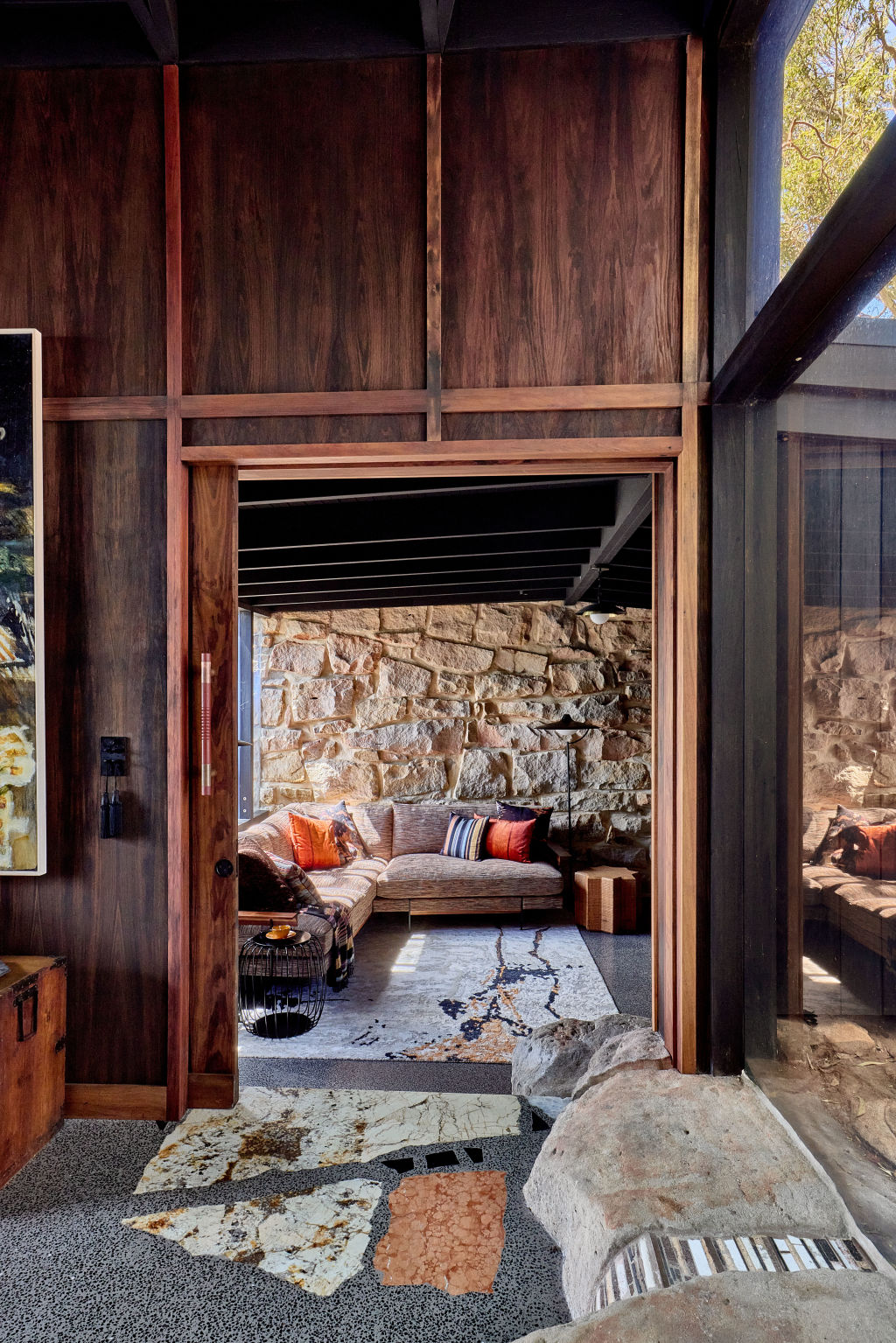
“Like art, it took time to place and put together,” she says. “I get great joy out of the floor.”
The eye-catching floors also worked with the broader material palette, like the black-painted ceilings and Tasmanian blackwood walls that Spence “pickled” with a vinegar-and-steel-wool-based treatment she created.
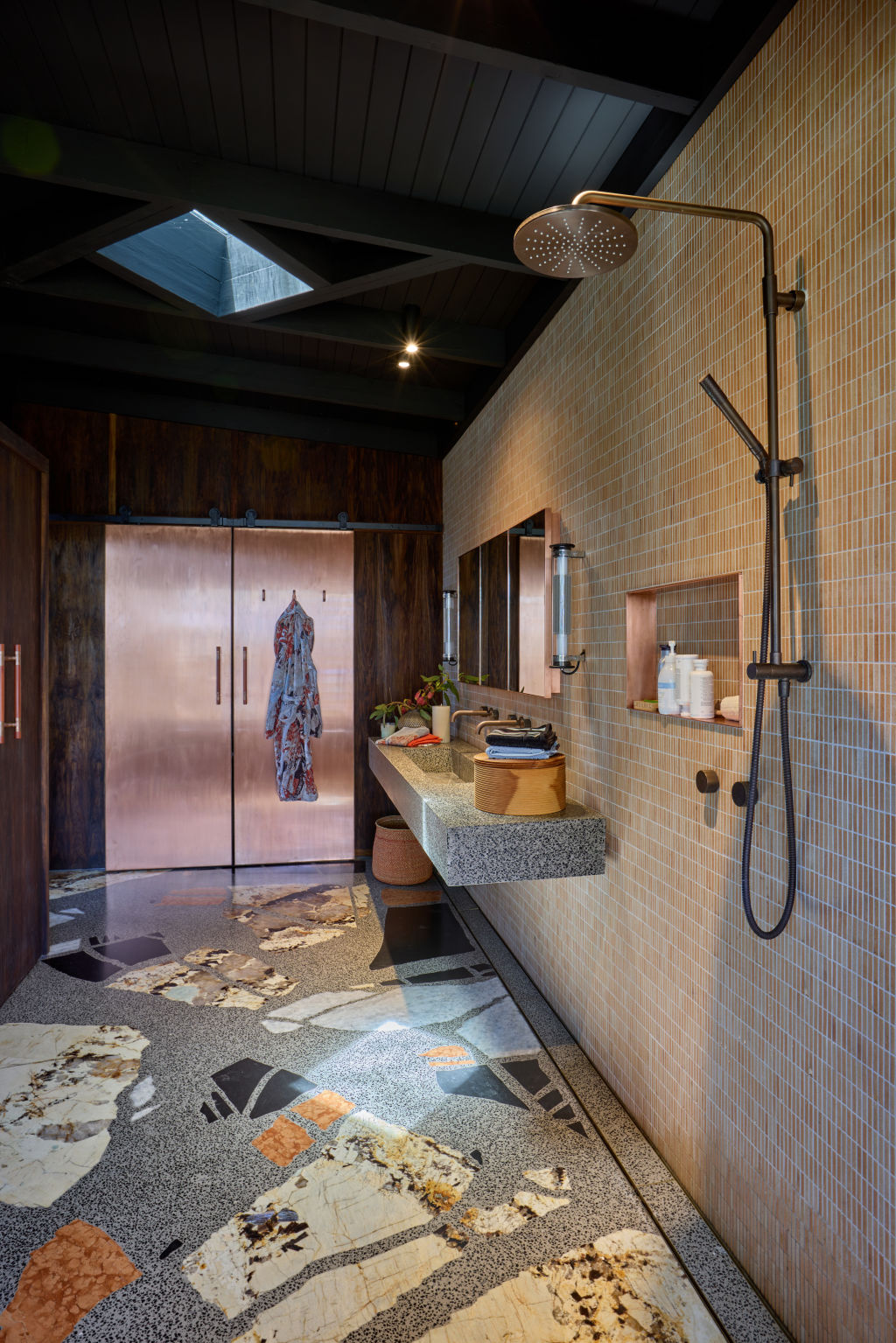
It should be no surprise that Babylon has been eyed by the design community.
It won the John Verge Award for Interior Architecture and an alterations and additions award at the recent Australian Institute of Architects NSW Architecture Awards, and it has also been shortlisted for this year’s Houses Awards for alteration and addition under 200 square metres.
“It’s a place where life is lived to the fullest,” Brown says.
We recommend
We thought you might like
States
Capital Cities
Capital Cities - Rentals
Popular Areas
Allhomes
More
- © 2025, CoStar Group Inc.
